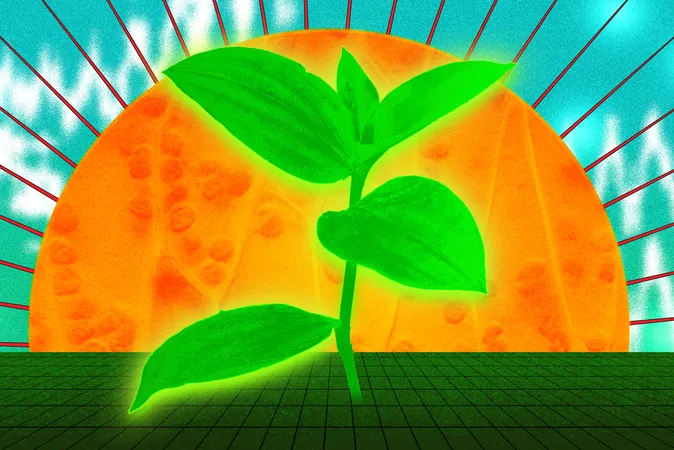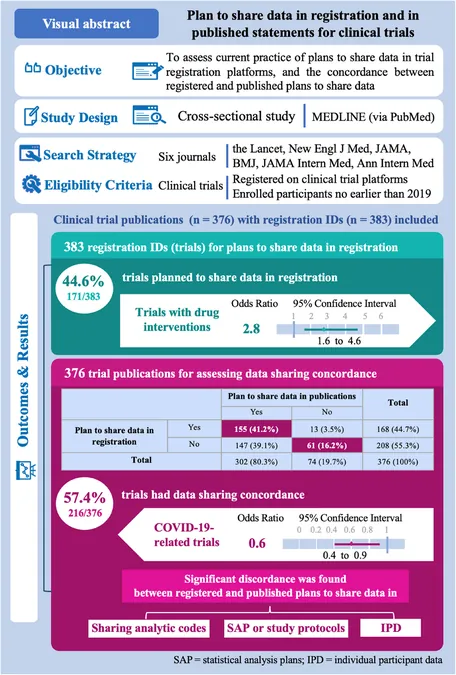
Revolutionizing Photosynthesis: MIT Chemists Supercharge Rubisco Efficiency
2025-07-07
Author: Jacques
Unlocking Nature's Secrets to Boost Crop Yields
In a groundbreaking discovery, MIT chemists have found a way to significantly enhance the efficiency of rubisco, a crucial enzyme in the photosynthetic process. Rubisco, known for its role in converting carbon dioxide into sugars, is notoriously inefficient compared to other enzymes, despite being the most abundant enzyme on Earth.
The Science Behind the Upgrade
Using a technique called directed evolution, researchers have identified genetic mutations in a bacterial version of rubisco from low-oxygen environments, boosting its catalytic efficiency by a remarkable 25 percent. Matthew Shoulders, an esteemed Professor of Chemistry at MIT, expressed optimism about the potential of engineering improved forms of this vital enzyme.
Photosynthesis in Action
During photosynthesis, sunlight energy is initially converted into ATP, and then used to transform ribulose bisphosphate into glucose—with rubisco catalyzing the first reaction. However, traditional rubisco is relatively sluggish, performing only one to ten reactions per second. Additionally, it can mistakenly react with oxygen, leading to energy loss.
Innovative Techniques for a Greener Future
Previous attempts to enhance rubisco's efficiency yielded limited improvements. These often involved error-prone PCR techniques, which restricted the number of mutations that could be practically tested. The MIT team, however, adopted a novel mutagenesis approach called MutaT7, enabling faster and more effective screening of mutations in live cells.
Energizing the Enzyme
The researchers focused on a faster variant of rubisco from the Gallionellaceae bacteria family. By subjecting the enzyme to six rounds of directed evolution in E. coli, they discovered three key mutations enhancing its oxygen resistance. These mutations allow rubisco to favorably interact with carbon dioxide, sharply improving its catalytic efficiency.
Implications for Agriculture and Beyond
With ongoing research targeting various forms of rubisco, including those found in plants, the potential benefits are enormous. Plants currently lose about 30% of energy due to photorespiration—when rubisco reacts with oxygen instead of carbon dioxide. A more efficient rubisco could dramatically enhance agricultural productivity.
Towards a Sustainable Future
This innovative research not only paves the way for advancements in agricultural science but also opens new avenues for sustainable practices. With funding from numerous reputable institutions, including the National Science Foundation and National Institutes of Health, the quest for an improved rubisco could redefine our approach to crop yields and sustainability.









 Brasil (PT)
Brasil (PT)
 Canada (EN)
Canada (EN)
 Chile (ES)
Chile (ES)
 Česko (CS)
Česko (CS)
 대한민국 (KO)
대한민국 (KO)
 España (ES)
España (ES)
 France (FR)
France (FR)
 Hong Kong (EN)
Hong Kong (EN)
 Italia (IT)
Italia (IT)
 日本 (JA)
日本 (JA)
 Magyarország (HU)
Magyarország (HU)
 Norge (NO)
Norge (NO)
 Polska (PL)
Polska (PL)
 Schweiz (DE)
Schweiz (DE)
 Singapore (EN)
Singapore (EN)
 Sverige (SV)
Sverige (SV)
 Suomi (FI)
Suomi (FI)
 Türkiye (TR)
Türkiye (TR)
 الإمارات العربية المتحدة (AR)
الإمارات العربية المتحدة (AR)